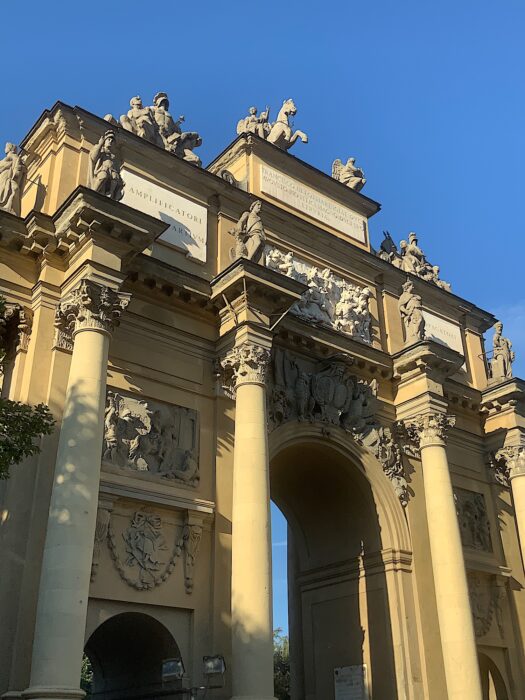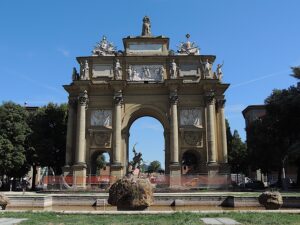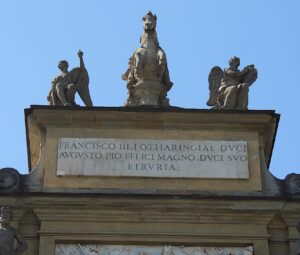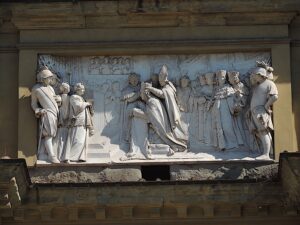ARCO DI TRIONFO DI PORTA SAN GALLO

Age
1738-1740
Designer
Jadot Jean Nicolas
The Arco di Trionfo di Porta San Gallo, designed by Jadot Jean Nicolas, was erected in Piazza della Libertà to welcome triumphantly the granduca of Tuscany Francesco Stefano di Lorena; the Duke crossed the arch, not yet completed, only once, on 19 January 1739. The construction of the arch, for which 4000 workers were hired, had begun a short time before (16 December 1738); the allegorical-decorative part was completed only in 1759. For a case of fate, the Lorraines made also their exit from Florence, in 1859, through the arch. On the opposite side of the square stands the door of 1285 that was part of the last circle of the Florentine walls. The arch has twelve Corinthian columns fourteen meters high and is completed by a decoration consisting of sixteen allegorical figures, a frieze with heraldic motifs, four trophies of arms and four bas-reliefs with episodes from the life of the duke of Lorraine. The arc is surmounted by the equestrian statue of the duke, by Vincenzo Foggini, with two victories on the sides. On the side towards the city, there is an inscription of 1745 in memory of the coronation of Francesco I as emperor of Germany, while on the inner sides of the fornix there are two memories, one praising Vittorio Emanuele III, king of Italy, the other in memory of the fallen of the Popolo di San Gallo during the First World War. During the renovation of the city in the years of Florence Capital (1865-1871) there was an urban revolution in the city which also involved the arch; designed by Giuseppe Poggi, the walls were demolished and the arch was isolated in the center of the square. The arc has been affected over the years by various conservative interventions. During one of these interventions (1915) numerous substitutions were made. Other replacements of original parts with artificial stone copies were made in 1963. This intervention was followed by others in the seventies and nineties.
The arch and columns are made of Pietra Serena Sandstone (Pietra Bigia variety), the sculptures and bas-reliefs on the south face are in Apuan Marble while the sculptures and bas-reliefs on the north face are both in Pietra Serena Sandstone (Pietra Bigia variety) and in artificial stone (Mortar).


